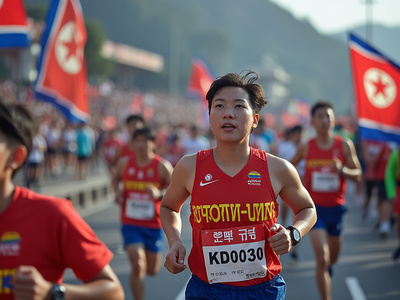
Nuclear Energy: A Pathway for Thailand's Sustainable Development and Emission Goals
Expert advocates for the adoption of Small Modular Reactors to bolster Thailand's energy security and align with climate commitments.
PARIS: Nuclear energy is being proposed as a key component in aligning Thailand's sustainable development goals with its commitment to achieving net-zero emissions by 2065. As reported by the Ministry of Natural Resources and Environment, approximately 60% of Thailand's electricity is currently generated from natural gas, while renewable energy sources contribute around 20% to the country's overall power generation.
Experts point out that there are significant challenges facing renewable energy's long-term viability, including unstable power generation and substantial investment requirements.
Patti Boonyasukanon, the vice president of corporate communications and public affairs at Global Power Synergy Public Company Limited (GPSC), recently emphasized the potential of Small Modular Reactors (SMRs) as a solution for achieving sustainable energy goals.
Each SMR is designed with a maximum output capacity of 300MW(e), representing about one-third of the output from traditional nuclear reactors.
Mr. Boonyasukanon noted that the modular design of SMRs allows for factory assembly and straightforward transportation to installation sites.
The reactors generate electricity through nuclear fission, utilizing heat while incorporating enhanced safety measures.
Notably, the passive safety features of SMRs aim to minimize the risk of radioactive leakage, even in the event of an accident.
GPSC has shown a strong interest in nuclear energy as a sustainable power source.
Recently, the company signed a memorandum of understanding with Seaborg Technologies ApS to collaborate on the development of SMR technology.
However, Mr. Boonyasukanon acknowledged that public hesitation regarding the environmental risks associated with nuclear energy poses a significant obstacle to its integration into Thailand's energy mix.
He stressed the importance of collaborative efforts among all relevant stakeholders to improve public comprehension of contemporary nuclear technology, especially that pertaining to SMRs, which are characterized by enhanced safety and investment viability.
According to the International Atomic Energy Agency (IAEA), nuclear energy currently accounts for approximately 10% of global electricity generation.
As of now, 30 countries operate nuclear power plants, with France leading the way by generating 71% of its electricity through nuclear means.
SMRs are noted for their ability to reduce costs and construction times while offering the flexibility to deploy incrementally to meet rising energy demands.
Presently, several countries, including Argentina, Canada, China, Russia, South Korea, and the United States, are either constructing or in the licensing phase of SMRs.
Globally, more than 80 commercial SMR designs are underway, addressing a variety of applications such as electricity generation, hybrid energy systems, water desalination, industrial steam production, and heating.
In alignment with these developments, Mr. Boonyasukanon mentioned that the Thai Ministry of Energy has incorporated SMRs into its Power Development Plan for 2024–2080, with a target to generate no less than 600MW from nuclear energy.
This plan is intended to contribute to the reduction of carbon emissions within the power sector while ensuring that electricity costs remain capped at four baht per unit.
Emphasizing the importance of clean energy in fulfilling Thailand’s climate commitments, Sittichai Saereesongsaeng, Deputy Permanent Secretary of the Ministry of Natural Resources and Environment, highlighted that the advancement of nuclear technology necessitates extensive research, particularly concerning safety standards, to foster public trust and confidence.
Experts point out that there are significant challenges facing renewable energy's long-term viability, including unstable power generation and substantial investment requirements.
Patti Boonyasukanon, the vice president of corporate communications and public affairs at Global Power Synergy Public Company Limited (GPSC), recently emphasized the potential of Small Modular Reactors (SMRs) as a solution for achieving sustainable energy goals.
Each SMR is designed with a maximum output capacity of 300MW(e), representing about one-third of the output from traditional nuclear reactors.
Mr. Boonyasukanon noted that the modular design of SMRs allows for factory assembly and straightforward transportation to installation sites.
The reactors generate electricity through nuclear fission, utilizing heat while incorporating enhanced safety measures.
Notably, the passive safety features of SMRs aim to minimize the risk of radioactive leakage, even in the event of an accident.
GPSC has shown a strong interest in nuclear energy as a sustainable power source.
Recently, the company signed a memorandum of understanding with Seaborg Technologies ApS to collaborate on the development of SMR technology.
However, Mr. Boonyasukanon acknowledged that public hesitation regarding the environmental risks associated with nuclear energy poses a significant obstacle to its integration into Thailand's energy mix.
He stressed the importance of collaborative efforts among all relevant stakeholders to improve public comprehension of contemporary nuclear technology, especially that pertaining to SMRs, which are characterized by enhanced safety and investment viability.
According to the International Atomic Energy Agency (IAEA), nuclear energy currently accounts for approximately 10% of global electricity generation.
As of now, 30 countries operate nuclear power plants, with France leading the way by generating 71% of its electricity through nuclear means.
SMRs are noted for their ability to reduce costs and construction times while offering the flexibility to deploy incrementally to meet rising energy demands.
Presently, several countries, including Argentina, Canada, China, Russia, South Korea, and the United States, are either constructing or in the licensing phase of SMRs.
Globally, more than 80 commercial SMR designs are underway, addressing a variety of applications such as electricity generation, hybrid energy systems, water desalination, industrial steam production, and heating.
In alignment with these developments, Mr. Boonyasukanon mentioned that the Thai Ministry of Energy has incorporated SMRs into its Power Development Plan for 2024–2080, with a target to generate no less than 600MW from nuclear energy.
This plan is intended to contribute to the reduction of carbon emissions within the power sector while ensuring that electricity costs remain capped at four baht per unit.
Emphasizing the importance of clean energy in fulfilling Thailand’s climate commitments, Sittichai Saereesongsaeng, Deputy Permanent Secretary of the Ministry of Natural Resources and Environment, highlighted that the advancement of nuclear technology necessitates extensive research, particularly concerning safety standards, to foster public trust and confidence.











